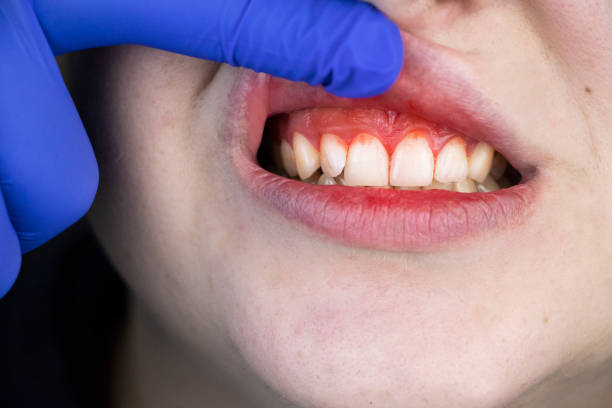Gum disease, also known as periodontal disease, is a common yet often overlooked oral health issue. It is sometimes referred to as the “quiet disease” because it can manifest with subtle symptoms or none at all. However, early detection and treatment are crucial to prevent serious complications. In this article, we will explore the causes, symptoms, prevention, and management of gum disease.
Understanding the Causes
Gum disease typically begins with gingivitis, which is characterized by inflammation of the gums. The primary cause of gingivitis is the buildup of bacteria on teeth, known as plaque. These bacteria release irritants that inflame the gums. Inadequate oral hygiene, such as insufficient brushing and flossing, often leads to gingivitis. Neglected areas, like the gums around the back of the teeth, are particularly susceptible to infection.

Image from iStock
Diagnosing Gingivitis
Dentists can diagnose gingivitis by measuring the space between gums and teeth using a special instrument. Larger spaces indicate the presence of the condition. If left untreated, gingivitis can progress into periodontal disease, where bacteria invade and destroy the tissues beneath the gums. As a result, the supporting bone structure weakens, teeth become exposed and sensitive, gaps form between teeth, and tooth stability is compromised.
Risk Factors and Susceptibility

Image from iStock
Certain factors increase the likelihood of developing gum disease. Smokers, individuals with diabetes, and teeth grinders are at higher risk. Additionally, specific medications like steroids, epilepsy drugs, and cancer treatments can elevate the risk. Genetics also play a role in determining susceptibility to gum disease. Interestingly, people who rarely experience cavities are more prone to developing periodontal disease, as the bacteria responsible for gum disease outcompete cavity-causing bacteria.
Spotting the Warning Signs
Gingivitis is often painless, making it easy to overlook. However, individuals with gingivitis may notice bleeding gums while brushing or flossing, as well as redness in the gum area adjacent to the teeth. Smokers with gingivitis may not experience bleeding or other symptoms, leading to a false sense of security. Maintaining regular oral hygiene practices can prevent gum disease, but once gingivitis has set in, professional intervention may be necessary. Accumulated bacteria beneath the gum line can be effectively treated with a combination of professional cleaning and antibiotics.
Progression and Treatment

Image from iStock
When gingivitis progresses to advanced periodontal disease, the symptoms become more pronounced. Receding gums, increased gum sensitivity, shifting teeth, chronic bad breath, and loose teeth are common indicators of advanced gum disease. While advanced periodontal disease may be incurable, dentists and periodontists can recommend treatments to slow down or prevent further gum and bone loss. Deep cleaning of the affected tooth roots and gum surgery may also be necessary.
Prevention is Key
Maintaining healthy gums is simple but essential. Brush your teeth twice a day, floss daily, and schedule regular dental cleanings every six months or as advised by your dentist. By detecting gum disease early, you increase the chances of successful intervention and treatment.
Takeaway

Image from iStock
In conclusion, gum disease is a prevalent oral health issue that often goes unnoticed until it reaches an advanced stage. Understanding the causes, recognizing the warning signs, and taking preventive measures are crucial for maintaining healthy gums and preventing severe complications. By prioritizing good oral hygiene and seeking professional dental care, you can protect yourself from the ‘quiet disease’ lurking in your mouth. Remember, the sooner it’s detected, the more can be done to combat gum disease.
ALSO READ:
When Should You First Bring Your Child To The Dentist? The Answer May Surprise You
Brushing Your Teeth: Should You Do It Before or After Breakfast?
Survey Finds Most Singaporeans Put Long-Term Health At Risk By Being Complacent In Overall Oral Care